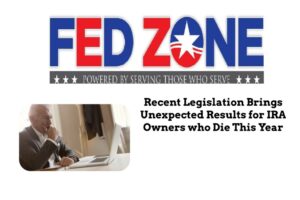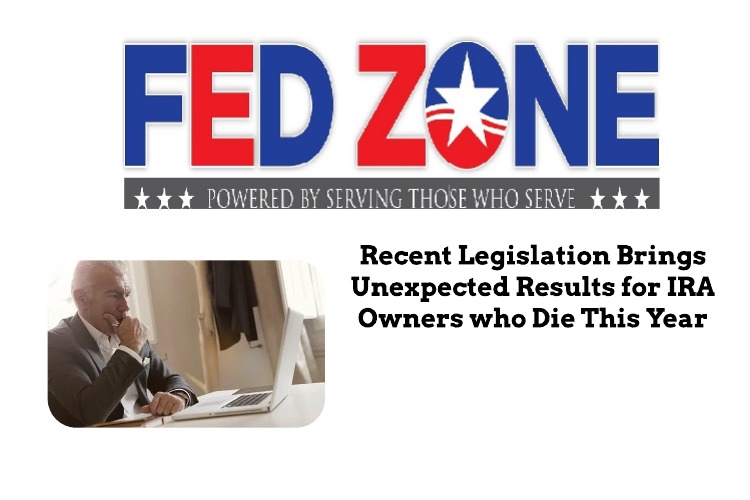Edward A. Zurndorfer –
While calendar year 2020 is a little over 50 percent completed, the year 2020 has probably seen the most legislation affecting employer-sponsored retirement plans and IRAs in perhaps the last 15 years. The SECURE Act, passed into law by Congress on Dec. 19, 2019 and taking effect on Jan. 1, 2020, and the CARES Act, passed into law by Congress on Mar. 27, 2020 in response to the COVID-19 pandemic, have affected retirement plan and IRA owners and beneficiaries. For retirement plan and IRA owners and beneficiaries who have died during 2020, there are some interesting situations to discuss. Four of these situations are presented.
Situation 1: IRA contribution in the year of death
The CARES Act extended the 2019 income tax filing deadline three months to July 15, 2020. With the three-month filing deadline extension, the IRS also permitted a three month extension for individuals to make their 2019 IRA contributions. It should be explained that individuals are permitted to file their federal income tax returns reporting a deductible traditional IRA contribution before actually making the IRA contribution. Subsequently after filing the return sometime but before the tax filing deadline, the IRA contribution is made. For 2019, the IRA contribution for 2019 could be made as late as July 15, 2020 even though the 2019 federal income tax return was filed months before that.
Suppose an individual died between the time of filing his or her 2019 federal income return and making the 2019 IRA contribution. Can the estate or personal representative then make the contribution? The IRS has ruled absolutely not. In its ruling, the IRS stated that the now deceased IRA owner would obviously not “need” a contribution for retirement purposes if he or she has died. Moreover, the IRS said the estate or personal representative will have to amend the deceased IRA owner’s already-filed 2019 income tax return, removing the IRA contribution deduction.
Situation 2: Traditional IRA owner dies in an RMD year
A traditional IRA owner over age 70.5 (someone born before July 1, 1949) must take a required minimum distribution (RMD) every year before Dec. 31st of that year. If a traditional IRA owner over the age of 70.5 dies before taking his or her RMD for that year, then the IRA beneficiary must take the RMD for the year-of-death. Under the SECURE Act, those individuals born after June 30, 1949 take their RMDs starting in the year they become age 72 with the first year RMD due no later than April 1 following the year the individual becomes age 72. All subsequent year RMDs are due by Dec. 31 of that year.
The CARES Act waived RMDs due in 2020. This means that for any traditional IRA owner over 70.5 who died in 2020 and who did not take his or her RMD before death, then no year-of-death RMD for 2020 is necessary. The executor or personal representative of the traditional owner’s estate need not take the RMD for 2020.
The same rule applies to any inherited (“death”) traditional IRA or inherited (“death”) Roth IRA owner who died during 2020 before taking his or her RMD.
Situation 3: IRA beneficiary dies after Dec. 31, 2019
One of the provisions of the SECURE Act is that it eliminated the “stretch” IRA option for most non-spousal beneficiaries who inherit IRAs (both traditional IRAs and Roth IRAs) who die after Dec. 31, 2019. If a non-spousal beneficiary inherited an IRA from an IRA owner who died before Jan. 1, 2020, then the beneficiary had the option of receiving lifetime payouts from the inherited IRA based on the beneficiary’s life expectancy. Each year’s payout of an RMD would be based on the beneficiary’s remaining life expectancy. Thus, the term of a beneficiary “stretch IRA”.
But if a “stretch” IRA beneficiary dies after Dec. 31, 2019, then that is the end of that beneficiary’s “stretch IRA.” A successor beneficiary (secondary beneficiary or the beneficiary’s “beneficiary”) would have to receive any remaining balance in the inherited IRA under the SECURE Act’s “10-year rule.” Note that even if the secondary beneficiary would have qualified for the “stretch IRA” as an “eligible designated beneficiary” (EDB) under the SECURE Act, the secondary beneficiary will still have to withdraw the inherited IRA funds by the end of the 10th year after the original beneficiary’s death. Example of a secondary beneficiary is an adult child.
Situation 4: IRA (Traditional or Roth) has no named beneficiary
Neither the SECURE Act nor the CARES Act changed the post-death rules with respect to non-designated beneficiaries of retirement accounts. Non-designated beneficiaries are beneficiaries that are not “individuals”. Non-designated beneficiaries include an estate, a charity, or a non-qualifying trust. Typically, a non-designated beneficiary comes about when an IRA or a retirement plan owner does not name a beneficiary and the IRA or retirement plan passes to the estate of the deceased IRA or retirement plan owner.
When the IRA or retirement plan passes to the estate of the IRA or retirement plan owner, then what will happen depends on when the death of the IRA or retirement plan owner occurred; namely, before or after the owner’s required beginning date (RBD). The RBD would be April 1st following the year the individual became age 70.5 only if the individual was born before July 1, 1949 or April 1st following the year the individual becomes age 72, or if the individual was born after June 30, 1949. If death occurred before the RBD, then the IRA would then have to be paid out within five years of the death of the IRA or retirement plan owner.
If the death of the IRA or retirement plan owner is on or after the owner’s RBD, then the beneficiary can take payouts over what would have been the deceased IRA owner’s remaining single life expectancy had he or she lived. Note that according to IRS life expectancy tables, an IRA owner in his or her 70’s has a life expectancy exceeding 10 years. This means that upon death of the IRA owner post-RBD, the payout to the beneficiaries can exceed 10 years, which is different than the payout rules for the named IRA non- EDB beneficiaries under the SECURE Act.

Edward A. Zurndorfer is a CERTIFIED FINANCIAL PLANNER™ professional, Chartered Life Underwriter, Chartered Financial Consultant, Chartered Federal Employee Benefits Consultant, Certified Employees Benefits Specialist and IRS Enrolled Agent in Silver Spring, MD. Tax planning, Federal employee benefits, retirement and insurance consulting services offered through EZ Accounting and Financial Services, and EZ Federal Benefits Seminars, located at 833 Bromley Street – Suite A, Silver Spring, MD 20902-3019 and telephone number 301-681-1652. Raymond James is not affiliated with and does not endorse the opinions or services of Edward A. Zurndorfer or EZ Accounting and Financial Services. The information has been obtained from sources considered to be reliable, but we do not guarantee that the foregoing material is accurate or complete. While we are familiar with the tax provisions of the issues presented herein, as Financial Advisors of RJFS, we are not qualified to render advice on tax or legal matters. You should discuss tax or legal matters with the appropriate professional.
